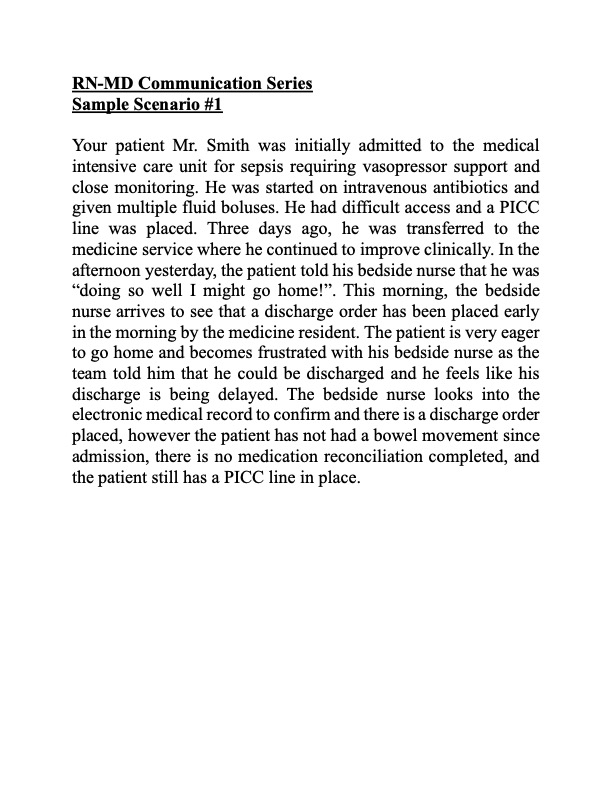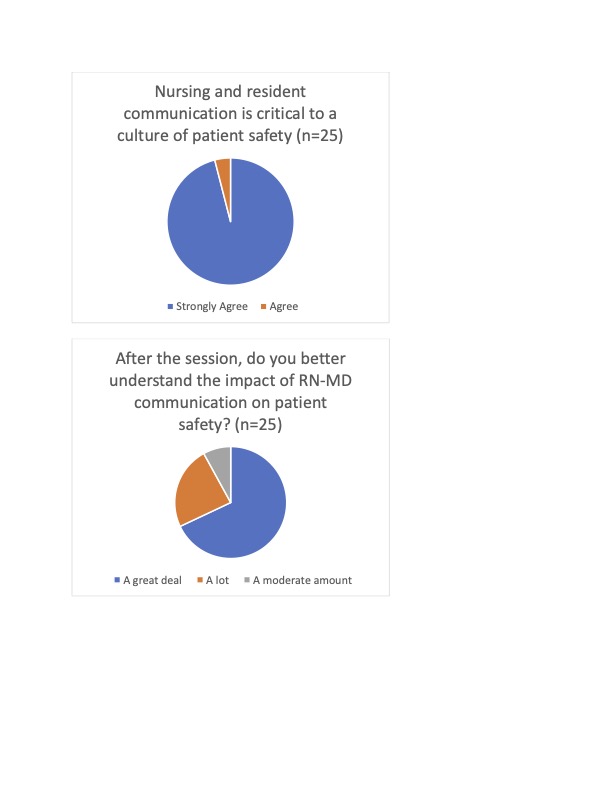Background: At all academic medical centers, nurses and resident physicians are two prominent front-line contributors to the care of patients. During a patient’s hospital stay, they receive communication regarding their diagnosis, test results, management, and plan of care from both the resident physicians and the nursing staff. Therefore, it is critical to have effective communication between nurses and residents to achieve excellent patient care.
Purpose: Through quality reviews and adverse event reporting (safety alerts) at our institution, we identified inadequate or fragmented communication between nurses and residents as the root cause of many adverse events. In addition, we were able to identify common themes and scenarios that occurred frequently, with similar communication issues observed throughout. The quality team devised a platform to connect nurses and resident physicians through a session titled “the RN-MD communication series”. This session was designed to improve communication and rapport, and to learn about each other’s workflow and perspective.
Description: Our quality improvement team built this session into a mandatory quality improvement focused rotation in our internal medicine residency curriculum, called “Rotation X”, which occurs weekly. The RN-MD communication series is a one hour long session that includes an intern (PGY-1), a senior resident (PGY-3), a chief resident, and a nurse or nurse manager from one of the medical or intensive care unit floors.In each session, four scenarios are sequentially presented in an open forum and each participant provides perspective from their point-of-view. We then discuss strategies to improve communication going forward with a focus on what changes could have been made to improve patient care.
Conclusions: We surveyed all participants over the past year and have had resoundingly positive feedback from both residents and nurses. 96% of participants strongly agreed that the MD-RN communication series and communication is critical to creating a culture of patient safety. After the session, 100% of participants stated that they better understood the importance of RN-MD collaboration, and 96% of participants found the session valuable for improving teamwork and rapport between the healthcare team. 100% of participants stated that they would recommend continuing these sessions, with multiple participants recommending more frequent sessions and involving other teams within the hospital.Our session is adaptable and can be easily implemented at any academic medical center. Furthermore, our session provides a forum where scenarios tailored to each institution can be presented and discussed with a focus on bridging gaps in communication to improve patient care.


